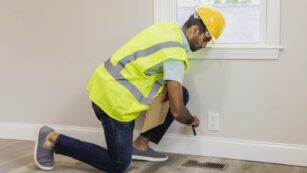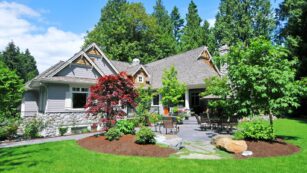
Retirement is a time to slow down, reflect, and focus on what truly matters. It’s a period where comfort, relaxation, and enjoying life are at the forefront. One of the best ways to ensure your home is the perfect retreat for this new phase is by remodeling it to better fit your evolving needs. However, like any significant investment, home remodeling comes with its financial considerations. For retirees, who may be on a fixed income, it’s crucial to explore various options to finance home renovations in a way that doesn’t strain your budget.
This article will not only explore the ways to fund your remodel but also guide you on how to create a home that’s not only comfortable and safe but also customized to your needs during retirement.
Financing Your Remodel: Exploring Your Options
For retirees who are ready to remodel but are concerned about financing, there are several options to consider. If you’ve built up equity in your home, a home equity loan or line of credit could be a good option. These loans typically offer lower interest rates than personal loans because they are secured by your home. For retirees with sufficient savings, tapping into personal savings or cashing in on investments could also be a viable option. Additionally, some retirees may find it useful to explore government programs or grants designed for senior home improvement, particularly those aimed at enhancing safety and accessibility.
One popular financing option for home remodels is a reverse mortgage, which allows you to access the equity in your home without monthly payments. The loan balance is repaid when you sell your home, move out, or pass away. While this option can be beneficial for many, it’s important to carefully review the pros and cons of reverse mortgages and consult a financial advisor to ensure it’s the right fit for you.
1. Prioritize Comfort and Ease of Use
As we age, our physical needs may change, and the home environment should reflect those adjustments. Remodeling your home with comfort and ease of use in mind can make a big difference in how you experience daily life.
- Upgrade Flooring: Consider replacing carpets with hardwood, tile, or vinyl flooring that’s easier to maintain and safer to navigate. Non-slip flooring is a must in areas like the bathroom and kitchen.
- Rethink Furniture: Invest in ergonomic furniture that supports good posture and is easy to get in and out of, such as recliners or sofas with sturdy arms.
- Widen Doorways and Hallways: As mobility becomes a concern, ensuring that doorways and hallways are wide enough to accommodate walkers or wheelchairs can make your home more accessible without sacrificing style.
2. Create an Open, Functional Layout
A home that flows seamlessly from room to room can reduce unnecessary strain and make daily activities more enjoyable. Open floor plans, where possible, are ideal for those who may have mobility limitations, as they eliminate cramped spaces and allow for easier movement between rooms.
- Remove Walls or Partitions: If you have a formal dining room or closed-off spaces, consider knocking down some walls to open up the floor plan.
- Adjust the Kitchen Layout: Create a layout where everything you need is within arm’s reach, such as incorporating a kitchen island or installing pull-out shelves in cabinets to reduce bending and stretching.
3. Invest in Smart Home Technology
Smart home technology is not only convenient but can also help keep you safe. From controlling the temperature to lighting your home, these tools can add comfort and peace of mind, especially as you spend more time at home.
- Smart Thermostats: A smart thermostat allows you to control your home’s temperature with ease, ensuring you’re comfortable year-round while potentially saving on energy costs.
- Automated Lighting: Motion-sensing lights in hallways, bathrooms, or staircases can reduce the risk of falls, while smart bulbs let you adjust lighting with a simple voice command or smartphone app.
- Voice-Activated Assistants: Devices like Amazon Alexa or Google Home can be used to control various aspects of your home, from lights and locks to entertainment systems, making life easier and more accessible.
4. Enhance Outdoor Living Spaces
Retirement gives you more time to enjoy the outdoors, and remodeling your outdoor spaces can create a perfect setting for relaxation, socializing, or even gardening. Outdoor living spaces are becoming an increasingly important part of modern homes, and the right design can improve your quality of life.
- Decks and Patios: Consider adding a deck or patio to your backyard, providing a place for outdoor meals, gatherings, or quiet moments of relaxation. Install comfortable seating, a pergola for shade, or even a hot tub for added luxury.
- Garden Accessibility: Raised garden beds or container gardens can allow you to enjoy gardening without the strain of bending over. Include pathways for easy access and wheelchair navigation if needed.
5. Focus on Safety Features
Ensuring your home is safe is crucial as you age. Many of the changes made during a remodel can enhance safety and minimize the risk of injury.
- Install Grab Bars: Grab bars in the bathroom, next to the toilet, in the shower, and in stairways can offer additional stability.
- Add Stairlifts or Elevators: If you live in a multi-story home, installing a stairlift or a small residential elevator can improve access to upper levels, making it easier to navigate.
- Improve Lighting: Good lighting is vital for preventing accidents. Install brighter lights in hallways, stairways, and entryways. Use dimmer switches to adjust the ambiance based on your needs.
6. Consider a Multi-Functional Space
Retirement offers the freedom to explore new hobbies or embrace old ones. Designing multi-functional spaces that serve various purposes can help you maximize your home’s potential.
- Home Office or Hobby Room: Whether you want a space for writing, crafting, or pursuing your passions, create a dedicated room that encourages productivity and relaxation. Choose flexible furniture and storage solutions that can adapt as your needs evolve.
- Guest Room Conversion: You might want to convert a spare bedroom into a guest room or even a private retreat for visiting friends and family. Adding a pull-out couch or Murphy bed makes it easy to accommodate guests without sacrificing space when it’s not in use.
7. Plan for Future Mobility
While it may seem far off, planning for future mobility challenges is important. Even if you’re still active now, you’ll want to create a space that allows you to age in place, without needing to move to a new home.
- Zero-Entry Showers: These walk-in showers have no thresholds, reducing the risk of tripping and providing easy access even with mobility aids.
- Lower Countertops and Cabinets: Lower kitchen counters and bathroom vanities make it easier to use spaces without straining your back or shoulders.
8. Sustainability and Energy Efficiency
As you enter retirement, being mindful of energy costs and environmental impact can be both a financial and ethical consideration. Sustainable design choices can make your home more eco-friendly while saving you money in the long run.
- Solar Panels: Installing solar panels can reduce energy bills and provide a reliable source of power, especially during the summer months.
- Energy-Efficient Appliances: Upgrade to energy-efficient refrigerators, dishwashers, and washers and dryers. Look for appliances with high Energy Star ratings to save on electricity and water usage.
Remodeling for a Peaceful, Enjoyable Retirement
Your home should be a place of comfort, joy, and peace during retirement. Remodeling your home allows you to create an environment that supports your lifestyle and well-being while enhancing your overall quality of life. By making thoughtful improvements—whether it’s upgrading flooring, adding safety features, or designing multi-functional spaces—you can create a home that’s perfectly suited for your retirement years.
Financing a home remodel doesn’t have to be overwhelming. With options like reverse mortgages, home equity loans, and personal savings, you can find a solution that works for your financial situation. It’s important to explore these options and choose the one that best aligns with your needs and goals.
Ultimately, remodeling your home after retirement is an investment in your future. It’s about creating a space where you can relax, explore new interests, and enjoy the freedom that comes with retirement, all while feeling secure and comfortable in your environment.













